
This article is about the concept of viral loops and a bit about our brand name. This concept is why we created our product and brand in 2016 — so we can confidently say that viral loops work as a strategy.
Imagine creating and launching an irresistible product. Your peers saw it and fell in love with it at first sight. Then customers from different places flock to your brick-and-mortar store or to your website daily — and lo, sold out every day on its first week!
On top of it all, you also see new faces. What a great feeling!
But just as you see the start of your success, you discover a worrying trend: your customer acquisition costs are increasing. If it continues down the same trend, you might start seeing red in all your profit-cost reports. So you start thinking and fretting about what could be missing.
This scenario is a common one for many startups and businesses. They have a great product or service but struggle to sustain their growth due to high customer acquisition costs. There is a solution, though—this is where Viral Loops come into play.
But what exactly are Viral Loops?
A Viral Loop is a cyclical growth strategy you can apply to your product or service. It’s a never-ending process in which your customers, users, or clients invite people within their network to join, expanding your reach.
As its name suggests, it uses the power of virality to “infect” or encourage people to become new customers.
Let’s make it simpler. Here’s what it can look like in your brand.
If a user enjoys and finds value in your product, they will recommend it to a friend or a family member and may even share it on social media, right? These peers will then visit your website or brand page, and if they like what you offer, they become customers themselves.
But it doesn’t stop there! If the network finds the same value in your brand, they will likewise share it with each of their networks, and then these new networks will refer it to their networks, and so on.
It creates a self-sustaining cycle of acquiring new prospects—thus, a loop.
This chain reaction generates new users and exponentially increases your fan base without spending a significant amount solely on advertising and other trial-and-error marketing efforts.

Note that step 4 is optional. But you can leverage rewards and incentives to boost your Viral Loop. We’ll talk more about this later.
Creating Viral Loops is an underrated and overlooked (often by startups) technique that can be a game-changer for your brand.
Treat a Viral Loop as your friend who’s always eager to chat about the newest show or snack they've stumbled upon. This friend is for keeps and will get you more customers down the line.
It's no secret that a well-crafted Viral Loop can skyrocket your brand's visibility, engagement, and sales. But what makes Viral Loops so effective?
It boils down to a simple yet profound aspect of human behavior—the psychology of trust, connection, achievement, and recognition.
Let’s dive deeper into how these elements contribute to the irresistible pull of Viral Loops.
Viral Loops prove that we trust and pay attention to the opinions of those around us.
Imagine a scenario where your sibling finds an intriguing new coffee shop in your neighborhood and tells you about it. Chances are, you'll be keen to check it out yourself, right? This instinctual reaction stems from a deep-seated trust in their insights and choices.
Here's where it gets exciting for entrepreneurs and marketers: the dynamics of trust don't just apply to us, it applies to your customers, too. Your potential customers are no different when it comes to the power of recommendations.
In fact, 90% of people are more likely to buy from a brand recommended by a friend or a family member! If you’d like to see more interesting stats, read our post on 50 Referral Marketing Statistics That Prove Its Power. Here’s a quick preview:

By strategically integrating Viral Loops into your marketing efforts, you're not just spreading the word about your product; you're amplifying it through the voices of those your customers already trust.
When we peel back the layers of what makes content, service, or product viral, we’ll see that, at its core, it's all about tapping into the human element. Specifically, the psychological need for belongingness and connection.
Take a look at the most memorable ads out there. You've got a mix—some are downright hilarious, others pull at your heartstrings, and some seem utterly absurd, yet we can't stop talking about them.
A great example of this is the video ad by Metro Australia entitled “Dumb Ways to Die.”
While it features cartoons, the ridiculousness (and possibility!) of the events and the decisions by the characters in the video make people relate so much that Metro’s ad did not just spread virally, but the message stuck to whoever viewed it.
Here's the deal: it's all about your brand's identity or how you craft your offerings for your audience.
If your brand hits home—creating a sense of belongingness for a particular group of individuals—you've struck gold. Your brand becomes more than relatable; it becomes a part of their social fabric. They will bring quality leads from their tribe!
This emotional connection? That's your ticket to getting people not just to take notice but to share, discuss, and essentially amplify your reach in ways traditional marketing can't match.
Tapping into the inherent desire for accomplishment and recognition is a powerful driver of virality.
Think about it—when individuals feel they achieve something and/or are rewarded for their contributions, their emotional stake in your brand’s success skyrockets.
Incorporating rewards and incentives does more than encourage sharing; it builds a community of brand advocates who are invested in seeing your brand succeed. From exclusive access to new products to points systems or public recognition, the key is creating a sense of achievement.
When individuals know their efforts lead to tangible rewards, they're not only more likely to engage in your Viral Loop; they're excited to do it.
When you understand how Viral Loops works through the lens of human psychology, you can skip the expensive trial-and-error stage and traditional marketing and focus on more important things in your brand.
Think of it as leveraging your consumers’ social circles to grow exponentially while keeping them happy and engaged. It’s not just about creating buzz; it’s about creating value that keeps giving back.
And the beauty of it? It’s backed by science and not luck, making it a strategy anyone could learn and master.
Remember the typical business problem we mentioned earlier about customer retention and new acquisition?
Viral Loops are turbocharged engines for your customer acquisition and retention woes. This ingenious approach amplifies excitement around your offering and positions you for unparalleled success in the cutthroat realms of marketing and app development.
While we touched on some of the benefits of Viral Loops in your business in the earlier parts of this article, let’s dive in and learn how they happen.
Picture this: each user has a handful of friends who invite more friends, and each friend invites more friends. Your customer base grows exponentially. It’s like a snowball rolling down a hill that gains size and momentum as it turns.
Viral Loops offers fast and scalable growth that traditional marketing needs help to achieve. More importantly, these “friends” are quality prospects or leads with higher retention and loyalty chances.
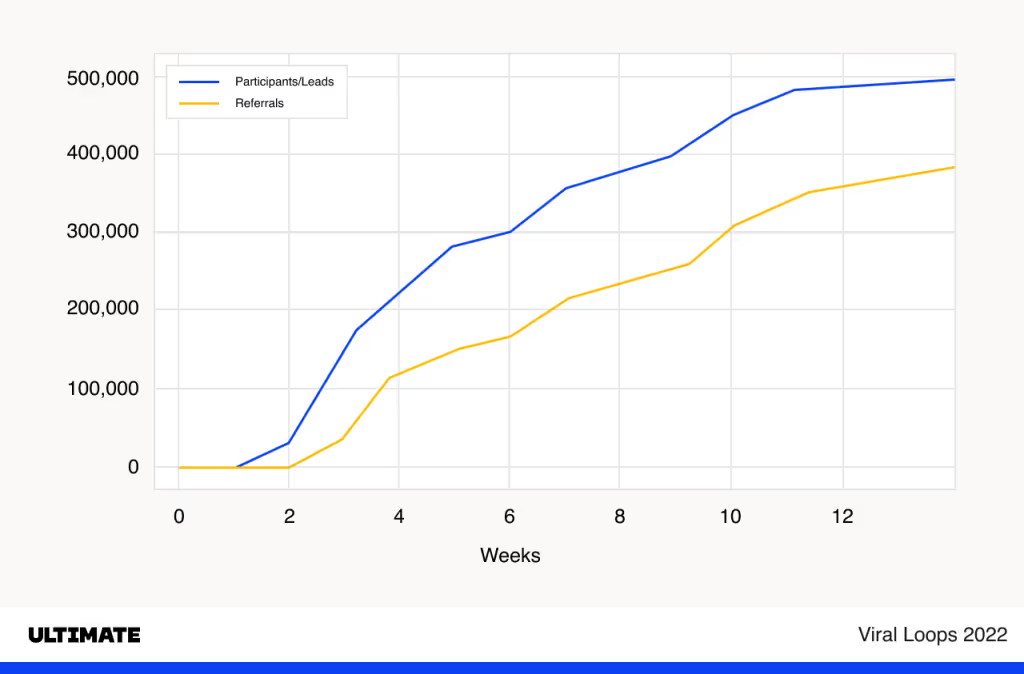
Tossing large chunks of your marketing budget into flashy ads? That's old school. What you should be zeroing in on is the raw power of personal connections and rewards for sharing.
Imagine transforming your existing users into your most vocal supporters. They will help you spread the word about your actions without breaking the bank. Sounds appealing, doesn’t it?
Diving into the mechanics, the virality coefficient is the magic number you should be paying attention to:

The virality coefficient is a crucial metric in understanding the effectiveness of viral loops. It quantifies the ability of a campaign or product to generate new users from each existing user.
Essentially, it measures how many new users, on average, an existing user can bring to your product or content through referrals. A virality coefficient greater than 1 means that your product or content is viral, leading to exponential growth, as each user brings in more than one new user.
This coefficient is calculated based on the average number of invitations sent by each user and the conversion rate of these invitations into new active users.
The referral conversion rate is the percentage of referred users who become active users. A higher conversion rate indicates a more compelling and enticing incentive for referrals to take action and try out your product or content.
Now, let's try an example for computing VC.
If, on average, a user invites 8 friends, and your company has a referral conversion rate of 15%, the virality coefficient would be calculated as:
Virality Coefficient = 8 * 0.15 = 1.20
NOTE: You might think you’ve heard of a similar concept—the Net Promoter Score (NPS). However, NPS is an indirect measure of loyalty, while the Viral Coefficient is a direct one. While the viral coefficient focuses on actual users recommending your brand, NPS focuses on the likelihood that your customers will recommend your product or service. We cover NPS in this article.
Going back to VC, since we want to ignite a viral firestorm, you must focus on the viral coefficient, and it must eclipse the 1 threshold. This >1 indicator signals that each user, on average, is spawning at least one additional user. This is the essential fuel for viral growth, propelling your content or product into exponential popularity.
On the flip side, if your viral coefficient hovers at or dips below 1, it means a linear or stagnant growth, lacking the momentum for that explosive spread.
The takeaway? A higher virality coefficient slashes your customer acquisition costs significantly.
Now, ask yourself: Why pour money into pricey and traditional ads when you can harness the power of Viral Loops and use your existing customers to fuel your growth?
Here's the thing — when your users become brand evangelists, narrating their success stories with your product or service, they're not just users anymore; they become part of your tribe.
This isn't just engagement; it's creating a fertile ground for loyalty and community. It means not only do they stay longer, but they also bring others into the fold. Imagine the power of a user-turned-advocate — it's like securing a sales pipeline and ROI that keeps giving.
Additionally, the more they recommend friends to your business, the more your brand stays on their minds. This inevitably increases your customer’s lifetime value, which is a win-win situation, however way you look at it.
By integrating exciting rewards and achievements, Viral Loops transforms the user experience into a thrilling adventure where users genuinely find value in your brand and feel appreciated and connected, turning them into passionate advocates for your brand.
Think about it. When was the last time you recommended something you love to a friend? That sense of pride is the goldmine. And if your friend liked it too, that’s double the pride and fun!
You can leverage the social networks of your current users to amplify your brand's reach and rocket your awareness into new territories. Today's digital landscape doesn't just bask in the glow of social media; it thrives on it, making it an unparalleled battleground for visibility.
But here's where it gets interesting: add a sprinkle of sharing and referral mechanics, and suddenly, your brand isn't just seen—it's endorsed.
It's the difference between shouting into a void and being introduced at a party by a mutual friend. That's how you convert trust into currency in the economy of attention, significantly tipping the scales of your marketing efforts.
When your customers engage with and discuss your product with their tribe, they're not just spreading the word—they're also providing valuable data about your audience, their preferences, and your potential customers (their friends!).
You might even discover a profitable audience segment that you’ve never considered before!
Look at it as a treasure trove of information. By actively listening to your customer base, you can elevate your product to new heights, ensuring it not only meets but exceeds user expectations.

Viral Loops are more than a marketing gimmick; they're a paradigm shift. They’ve played a pivotal role in the ascent of the biggest brands.
Adopting a well-crafted Viral Loop could be the tipping point for your business’s exponential growth.
If you are still unsure despite all the shared information, understanding the different types of Viral Loop may help you decide. So, keep on reading.
Viral Loops are not a one-size-fits-all marketing approach. So before reaping the benefits of one, you must first understand its different types to know which works best for your brand.
Among the myriad options, four distinct types stand out for their proven track record in amplifying growth rates.
This is the simplest and most common among the four types.
One scenario: As a customer, you’ve been struggling to find the perfect product to solve your problem and stumbled upon an exact, simple product that solves your dilemma.
Naturally, you’ll tell your family and close friends about this discovery. They go on and try that product, receive the same value, and will eventually tell others about it, too.
That’s the power of the word-of-mouth Viral Loop. It relies on satisfied users to spread the word about a product or service they find value in.
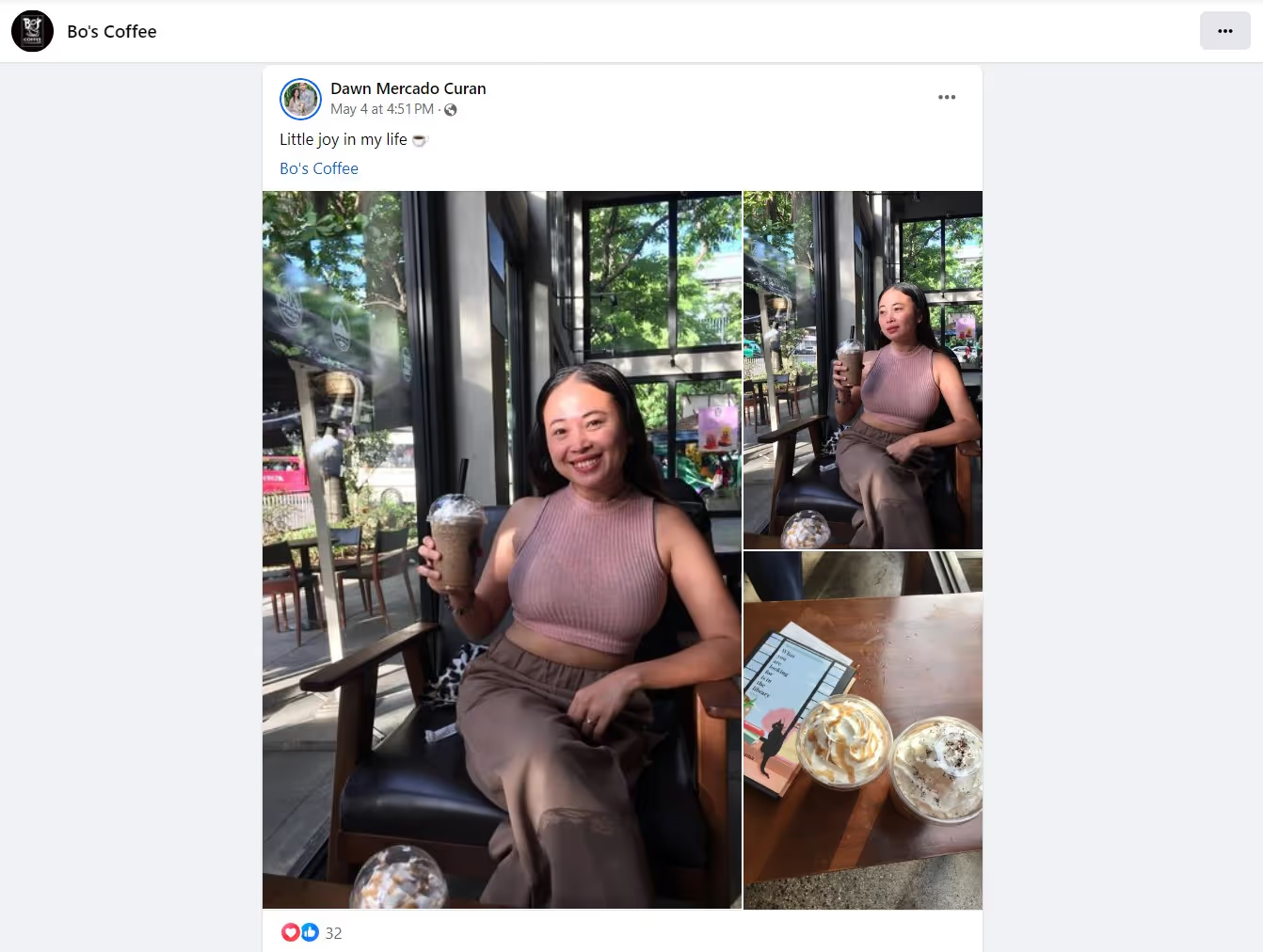
Creating an organic Viral Loop is like striking gold in the digital world. It's all about creating a product that users can't help but share.
Take Facebook in its infancy, for example. It grew its user base not through flashy ads or monetary incentives but because people naturally wanted to bring their friends into the fold.
They didn't need a nudge; the simple joy of being part of a burgeoning online community (and a hint of FOMO) was incentive enough.
Remember, true engagement and active communication are your best friends here. The more your users feel connected and involved, the more likely they are to share your product. And that's the secret sauce to organic growth and virality.
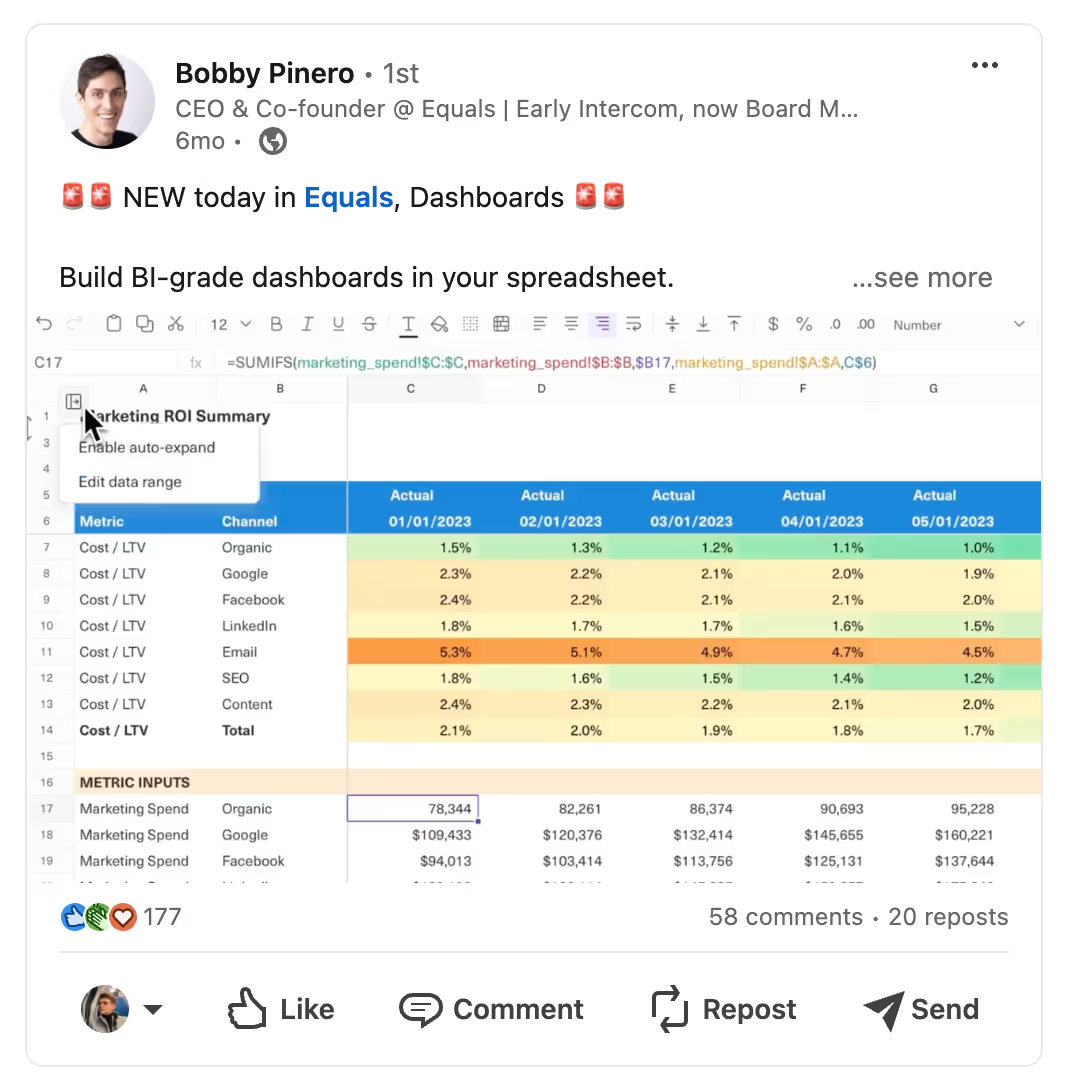
This loop happens when people are exposed to the product or service through simple, everyday interactions. This type happens on brands or products with high visibility.
There are three casual ways of subtly introducing your brand:

This is probably the best type of Viral Loop for startups and businesses looking to gain more customers. It offers rewards or benefits for users or customers who help spread the word about your product.
These include referral rewards, discounts, exclusive and early access, and coupons.
The key to success with this option is by presenting users with a compelling incentive to propagate your message further.
In this type of loop, you’ll find several kinds of incentives. Some of them are:
Incentives can also be given either (one-way) or both (two-way) to the referrer and the referral.
To complete the cycle, ensure the rewards and incentives are valuable to your audience and align with your brand’s identity. They must also be easily redeemable from your brand.
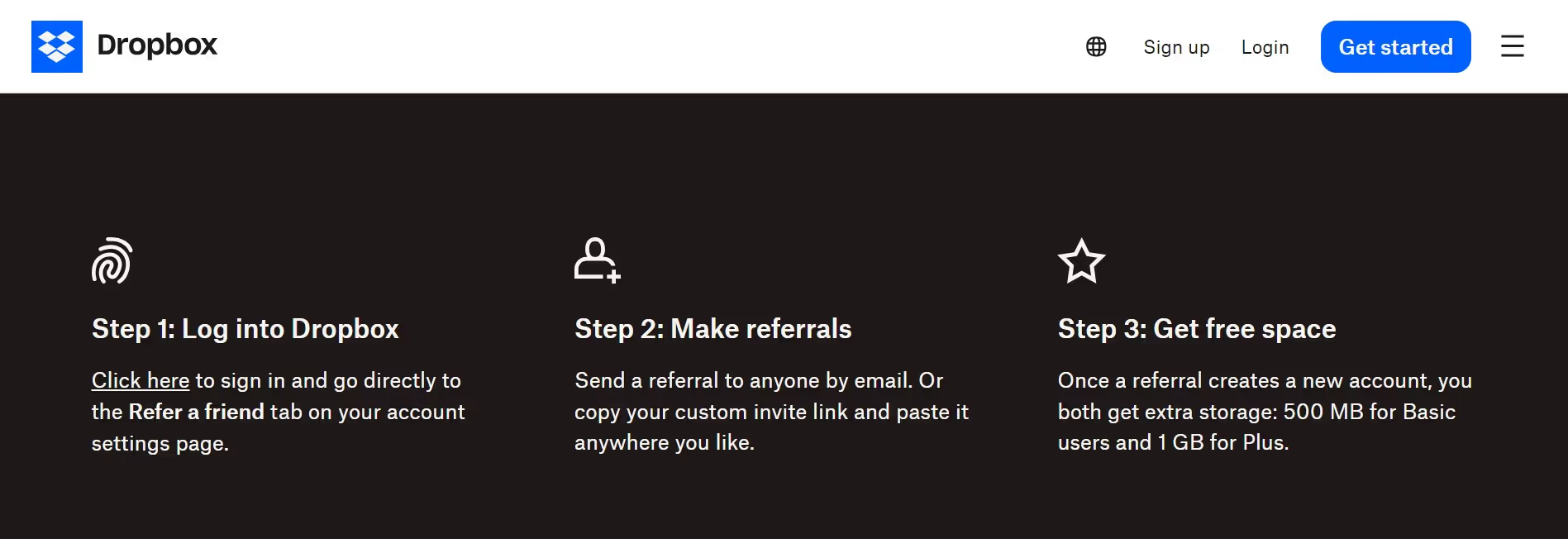
If you intend to use the incentivized Viral Loop in your brand, we’ve already prepared the Ultimate Referral Rewards Guide for you. This manual is your go-to resource for integrating the incentivized Viral Loop into your marketing programs.
These four Viral Loop types are your key to unlocking insane growth by leveraging the heck out of connections and networks.
Listen, it's all about knowing your product, knowing your audience, and knowing the killer value you're delivering. Get that down, and you can smartly pick which loop to ride and plan your next big move.
At the heart of a Viral Loop lies four crucial elements: SEND, SPREAD, CLICK, and CONVERT. The synergy of these elements powers a brand, product, or service's ability to grow virally.
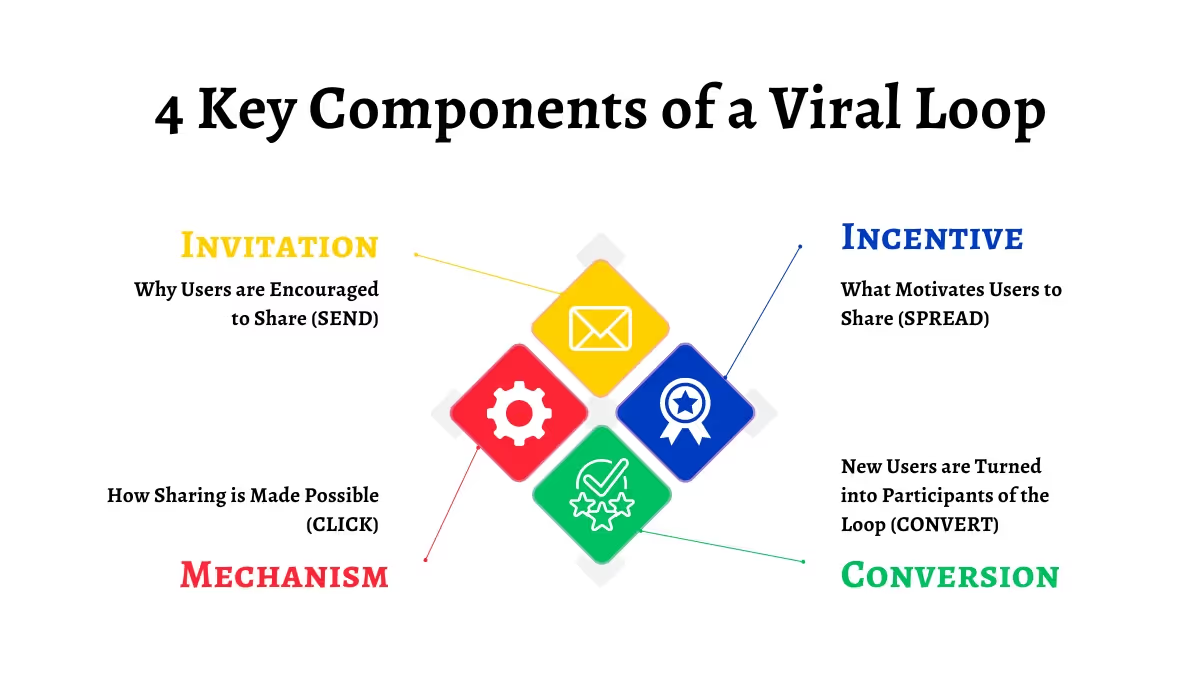
Here's a deeper look into each segment:
Your users are already deeply invested in your product. They can’t stop talking about it and constantly mention it to their connections. You should then make it straightforward for them to do so.
The invitation is your tool to make sharing easy, effortless, and irresistible.
Whether it’s a simple CTA button with “Invite Friends” written on it that is clearly visible, or it’s a personalized referral link included in the body of the message, the invitation is the start of the spark that creates the Viral Loop.

Your customer’s experience with your product or service can also serve as an invitation to other loop types, so make sure customer support and customer experience are among your priorities.
Whatever form it looks like, this invitation holds immense power. It is the gateway for your customers to become enthusiastic brand ambassadors of their own will eventually. In a study by Nielsen, 83% of consumers trust recommendations from friends and family members, making the invitation component an important driver of the Viral Loop.
But here's the clincher—what breathes life into an invitation? Clarity and ease.
Your call to action shouldn't just be visible; it should be compellingly intuitive, ensuring that your user’s enthusiasm is seamlessly translated into shares.
Also, personalization is pivotal. Tailoring invitations doesn’t just spark interest; it ignites action, significantly increasing the conversion rate from mere invites to loyal, active users.
Let’s face it: the truth is that people need a reason to share. The more reasons, the better your chances of spreading your brand to their tribe.
Some of their motivations are:

Experimentation is key when developing your incentive program. You want to find the perfect reward that truly clicks with your customer base.
Whether that means offering discounts on future purchases, complimentary streaming services, no-cost memberships, cash rewards, coupons, or vouchers, discovering the right fit can significantly amplify your business growth.
It's all about identifying and leveraging the most resonating incentives with your audience.
You have finally formulated the perfect invitation and incentive, but how will your users and customers share it?
That’s where the mechanism comes in. Selecting the right platforms and tools to make sharing effortless is, therefore, crucial.
You can take advantage of various marketing methods such as social media, email marketing, lead-generation efforts, messaging apps, or anything else you can think of—but your content must always be tailored to your audience.
Social media platforms like WhatsApp, Facebook, and X (Twitter) have become popular channels for sharing referrals because of their built-in easy-sharing features and widespread usage in the status quo.
Integrating your referral program with platforms like these can streamline the sharing process and reach an even larger audience.
To top that off, you must use tools that streamline message delivery and reach tracking, such as CRM tools and referral program apps like Viral Loops.
You can also include social proof in your sharing mechanism. You can opt to display testimonials or user-generated content (UGC) to create trust and improve credibility, making it more convincing for recipients of the invitation to act on the referral.
So, you’ve finally received referrals. Congratulations, your Viral Loop is effective and has converted new and unique users!
But the user journey doesn’t stop there. Conversion is about turning new customers or users into retaining ones and having them actively participate in the Viral Loop you’ve created.
When new users are hooked, they’ll be eager to start inviting others, just like how they were invited at the start. This keeps the Viral Loop going strong, so keep pressing their motivations.
When you engage and constantly communicate, you’ll be able to retain users and can easily encourage them to be part of the Viral Loop.
Give them regular updates on new features, promotions, and rewards to keep them excited and motivated to share and organically spread the word about your product or offer.
To weave the magic of a Viral Loop into your strategy, think of it as crafting a story so compelling that your audience becomes the storyteller.
In this section, we'll discuss the five vital steps to creating a Viral Loop, incorporating the key elements we discussed earlier. Remember, the essence of our Viral Loop adventure lies not just in the mechanics we've explored but in the art of making them resonate.
First things first, who’s your target audience? Develop an Ideal Client Profile to understand better their pain points, preferences, aspirations, motivations, and online presence.
Do they love visuals? Are they inclined to see data without visuals? Dig deep and know them like you are the closest of friends.
If you’re targeting a specific demographic, you have to dig deep and learn about them. Let’s say your a SaaS company targeting IT professionals, here are some data you should be looking at when building your client profile:
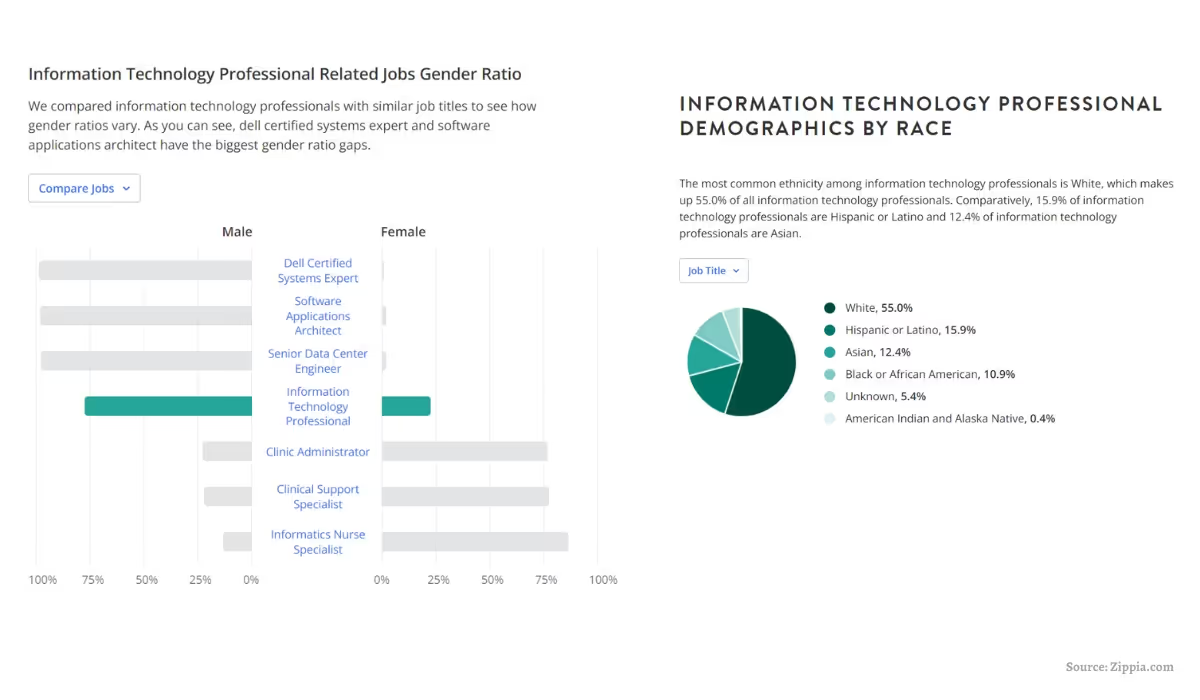
When you truly know and understand where they are coming from, you can start creating content, upgrades to your product, and even an incentive program they will surely patronize—it will be hard to resist!
Understanding your audience is just the beginning; now, it's crucial to launch an incentive program they simply can't overlook. Your incentives must be so convincing and compelling that they can’t help but sign up and share it within their network.
Make it feel exclusive, like a special membership club everybody wants to join. The key is to make the reward worthwhile and align it with what they value the most.
Where do your users love to hang out in person? How about online? Do they regularly use Facebook? Instagram? Tiktok? Or do they prefer a private lifestyle, commonly hang out in coffee shops, and never use social media?
Choosing the right platform is one key step to turbocharging Viral Loop’s efficiency and effectiveness. Go where your people are, be it a physical location or an online forum.
Importantly, tailor-fit your content to each platform. Each platform has a unique user base with common interests, style, and vibe. For instance, LinkedIn targets professionals while TikTok targets the young demographic. Pick wisely.

The simplicity of sharing greatly increases the likelihood of your content being circulated. Provide one-click sharing buttons or shareable links to simplify the sharing process.
Utilize QR and other unique codes for easier access. Remove any friction point that could deter people and click that X button. A frictionless sharing process significantly amplifies the effectiveness of your Viral Loop.

Harnessing the power of a Viral Loop is akin to taming a wild beast—it's not something you can simply set up, kick back, and hope for the best. Keep an eye on your metrics and check out how your strategies pan out, scrutinizing each share, click, and conversion.
Ever wondered why one campaign works over another? It's all in the A/B testing—discovering the precise messaging or incentives that your audience can't get enough of.

Resting on your laurels is not an option if you aim to dominate. So, make your next move with razor-sharp precision, fueled by the gold mine of data you've gathered.
Remember, a Viral Loop is an ongoing process of experimentation and improvement. Never abandon your project of starting a Viral Loop; otherwise, you will miss out on this opportunity to grow your business rapidly.
While Growth and Viral Loops may appear similar at first glance, delving deeper reveals distinct characteristics that set them apart. In the following section, we will explore these differences to provide valuable insights for your understanding.
Let’s uncover the nuances between these two strategies and how they can impact your approach.
Consider the growth loop not just a strategy but a spellbinding cycle where the magic of your product or service intensifies or creates more value for users with every iteration.
As its name implies, there is growth in the loop.
So what’s the magic here, or should I say, the science behind it?
A Growth Loop, as defined by its originator, Reforge, operates on a fundamentally simple yet impactful principle.
It encompasses a continuous, self-sustaining process that drives business growth by reinvesting its outcomes back into the system.
It has three main components:
Imagine it like a snowball (input) that starts rolling down a hill (activation); as it moves, it picks up more snow (output), growing larger without needing additional input. In the context of a business, this "snowball" could be anything from users, revenue, usage data, or product improvements.
The key feature of a growth loop is its ability to use the results it generates to fuel the next cycle of growth, creating a loop that feeds into itself.
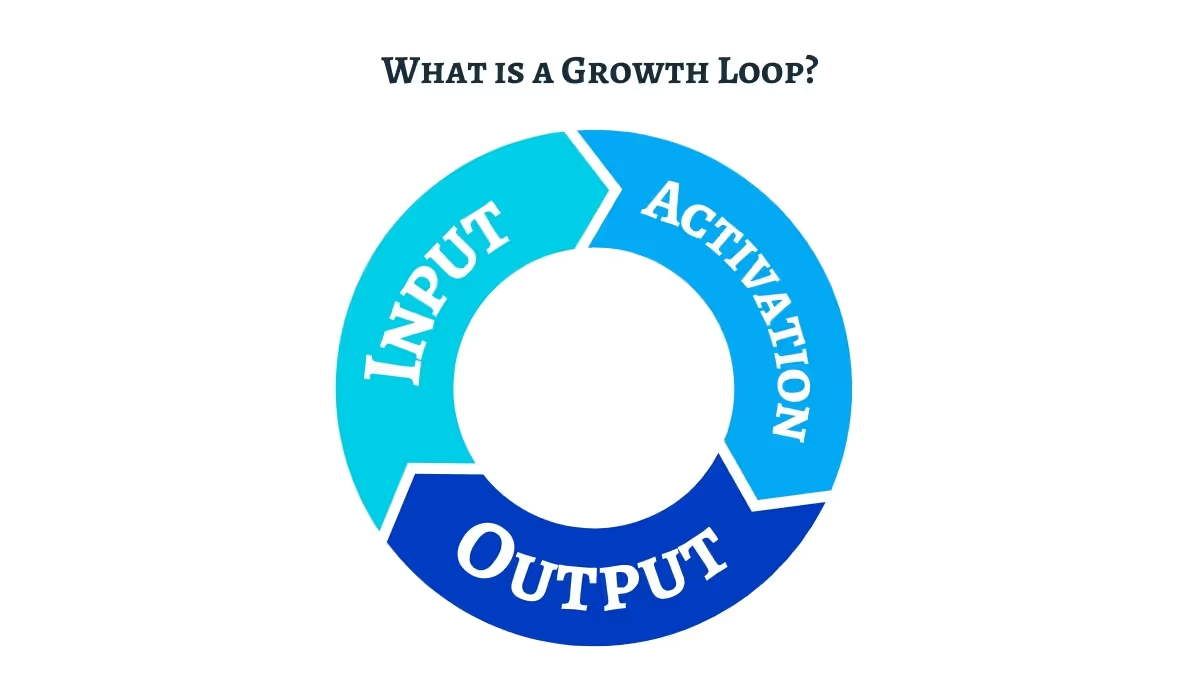
This model stands in contrast to traditional growth models that rely on external input for each growth phase, offering a more integrated and efficient approach to scaling a business.
You can have several growth loops within your business, but research shows that having one major growth loop can be more effective and sustainable.
To make it easier for you to understand growth loops, let's discuss a few examples.

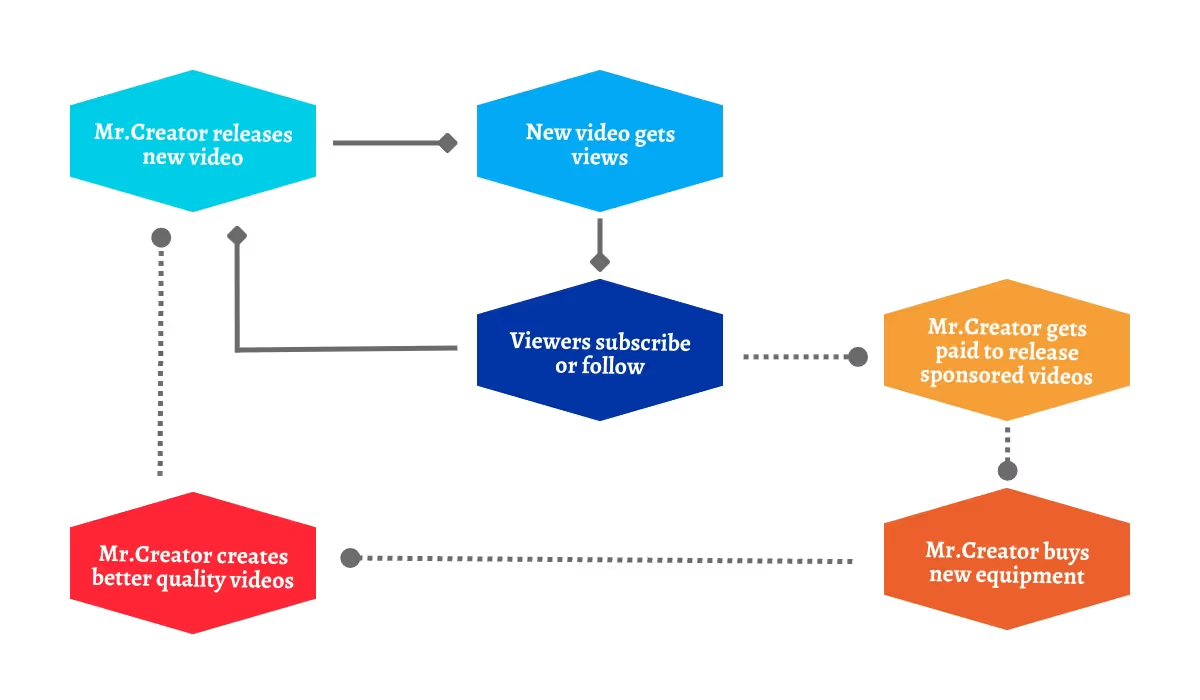
As a result, the quality improvement in content further magnifies the creator's appeal, drawing in even more followers and perpetuating a cycle of growth that is both self-sustaining and self-enhancing.
This cycle underlines a key principle: reinvesting the fruits of growth directly back into the creation and expansion process can dramatically amplify a creator's reach and impact, all without relying on traditional forms of advertising.
This growth loop isn't just about achieving a larger audience; it's about creating a thriving community around quality content, fostering an environment where each investment in improvement fuels the next phase of expansion.
They might sound similar but trust us — they have their unique traits. In fact, a Viral Loop can easily be placed as a type of Growth Loop, but with the goal of attracting new users into the fold.
Here’s an easy-to-understand comparison using several aspects.
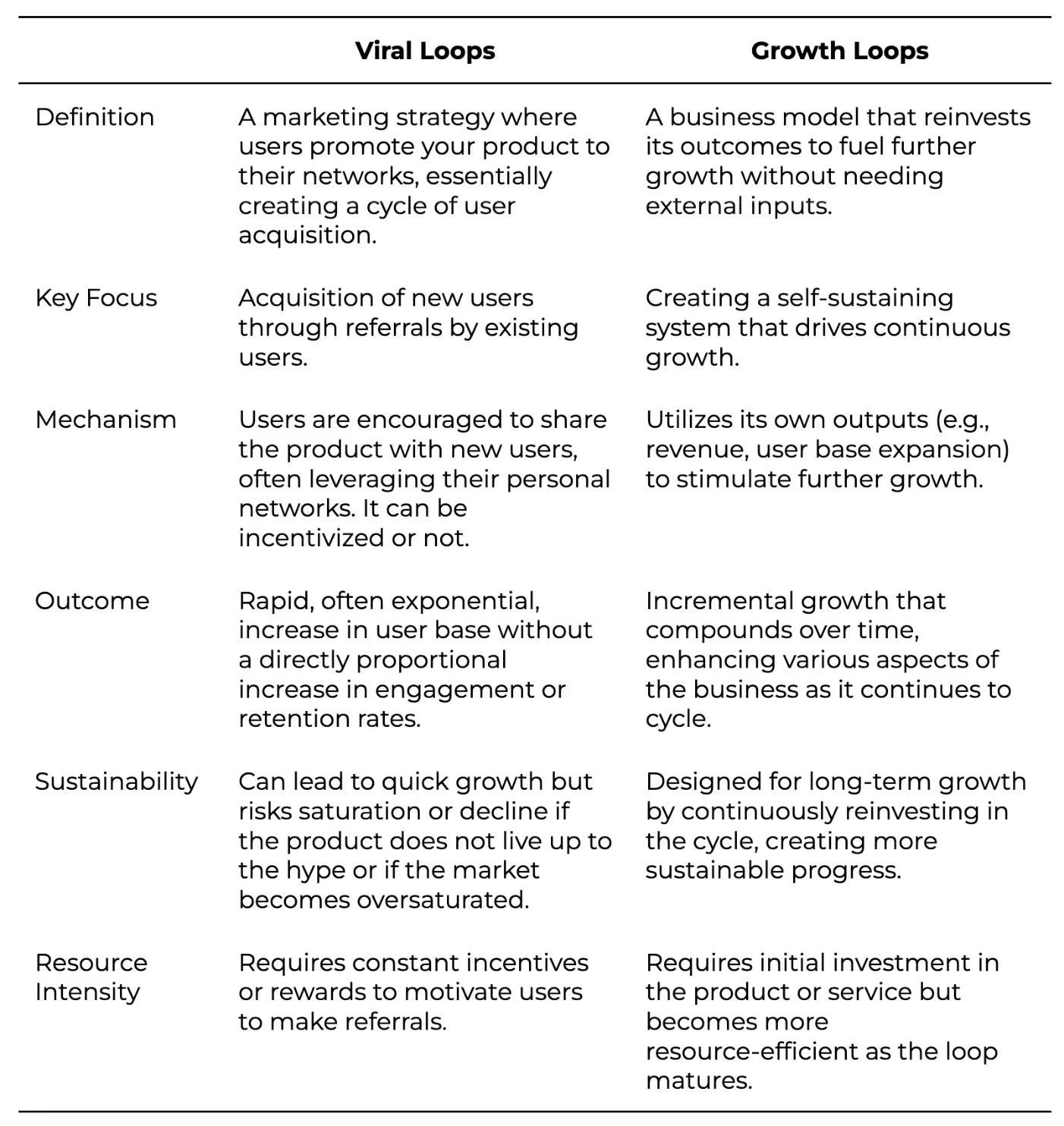
Let me guess, your next question is, “Do I need only to choose one?”. The answer is no. The next section will explain why and how.
Yes.
Viral Loops are all about getting your current customers to bring in new ones. Whether it’s through referral programs, rewards for sharing, or users creating content about you – Viral Loops has been the common ground for top brands and undeniably helped them shoot up to the fame they have now.
Now, Growth Loops? They're the secret sauce, the magic behind amplifying certain facets of your business, tailored to your unique goals. Mix that with a solid strategy, and you've got yourself a relentless, smart growth cycle that propels your business into scaling faster and more intelligently.
Making these loops work together is about creating a rhythm that dances between strategy and flexibility.
Following our E-Market Growth Loop example above, the Viral Loop can be incorporated by making your sales representative discuss the opportunity for the customer to receive a discount on their next purchase by referring someone they know who might be interested in what E-Market has to offer.
[enhanced ecommerce loop]
When this cycle just keeps rolling, and you start to see a pattern, your growth chart also starts to look pretty awesome.
The trick is to go deep down and understand each of the Viral Loops and Growth Loops to make them go well together. Make your referral or sharing program a no-brainer but still valuable; ensure a seamless signup experience for new users while keeping your current users hooked.
We’ve now seen that Viral Loops can be a real game-changer, but to put our money where our mouth is, let’s talk real-life results. Here are some brands that took advantage of Viral Loops and then took the world by storm.
First up, Airbnb. This rental giant led the innovation and revolutionized how it attracted more users through rewards. It offered perks, travel credits, vouchers, and discounts to kickstart its growth.
AirBnB’s viral loop is comprised of:
While AirBnB’s referral program itself has been scrapped in 2021, the platform has already gained significant traction with its viral loop strategy that allowed them to become the industry giant that they are now.
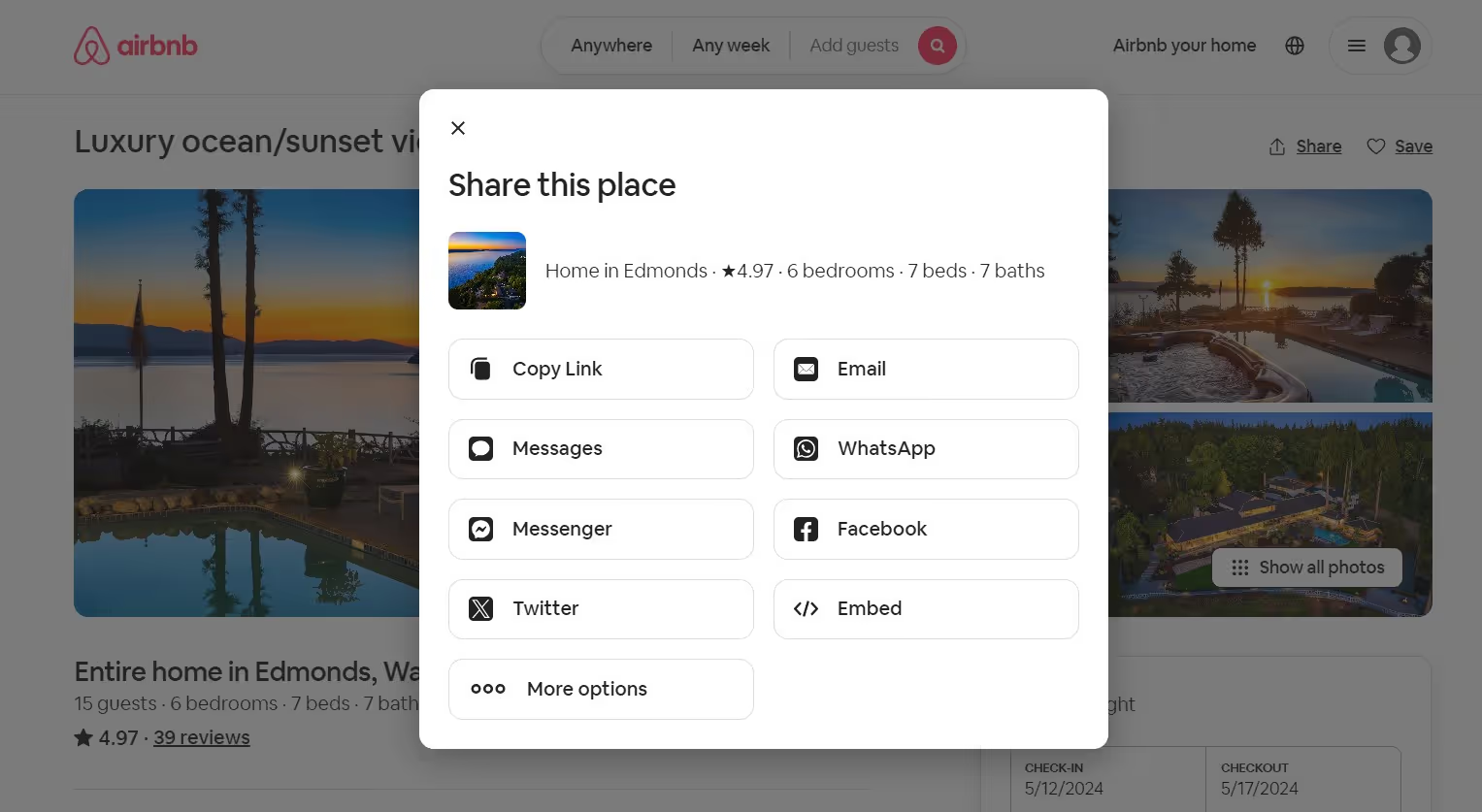
This is the most extensive professional social media networking. LinkedIn started gaining users when they made it incredibly easy to bring real-world contacts online.
How? They created a feature that directly syncs a phone’s contact numbers and emails into the platform, allowing LinkedIn to search for matching user accounts in their platform. Afterwards, it encouraged the current user to connect with the matches.
But how did LinkeIn’s Viral Loop make it work further?
These wonderful touchpoints allowed LinkedIn to keep users coming back, which also encouraged their peers to do the same.
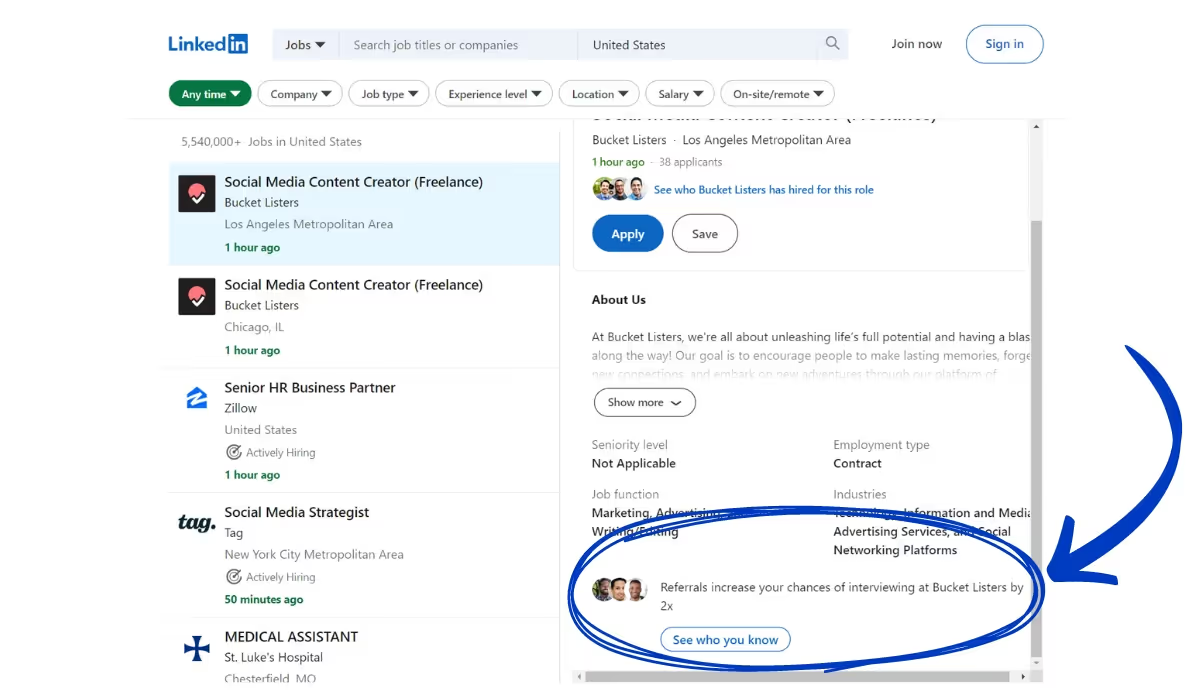
TikTok is the most popular video-sharing platform now. What took them to this level? They simply made content creation and sharing easily accessible, and boom! Gen Z loved every bit of it.
TikTok’s winning Viral Loop formula:
The biggest piece of TikTok’s Viral Loop is the TikTok logo that appears in every video created within the app. So yes, you can download your videos and upload them to other social networks, but it has the tell-tale sign of the source platform. It’s free advertising, and it’s brilliant!

Language learning can be very daunting, right? Well, Duolingo just made it fun. Not just by using a cute icon, but by gamifying the whole experience.
Their Viral Loop game plan:
Uber capitalized on Viral Loops like no other, and they even had an advantage – well, you have to use transportation daily.
How did they use their edge to have even more edge?
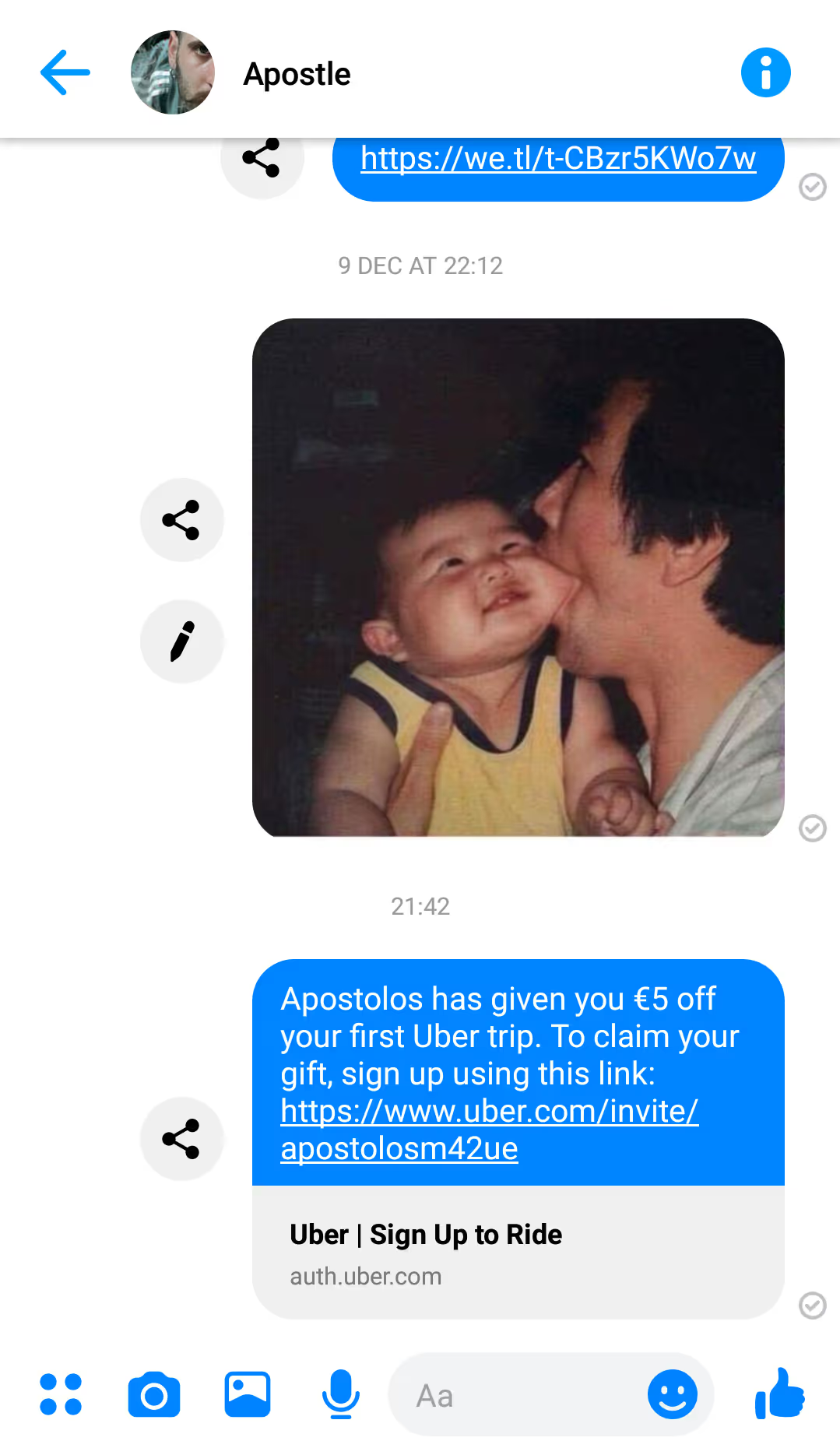
Rising in popularity during the pandemic, Zoom ensured the platform is suitable for all types of meetings. With most users new to the concept of virtual meetings or virtual work, they made sure that the design was intuitive.
But what made Zoom’s Viral Loop different from others?
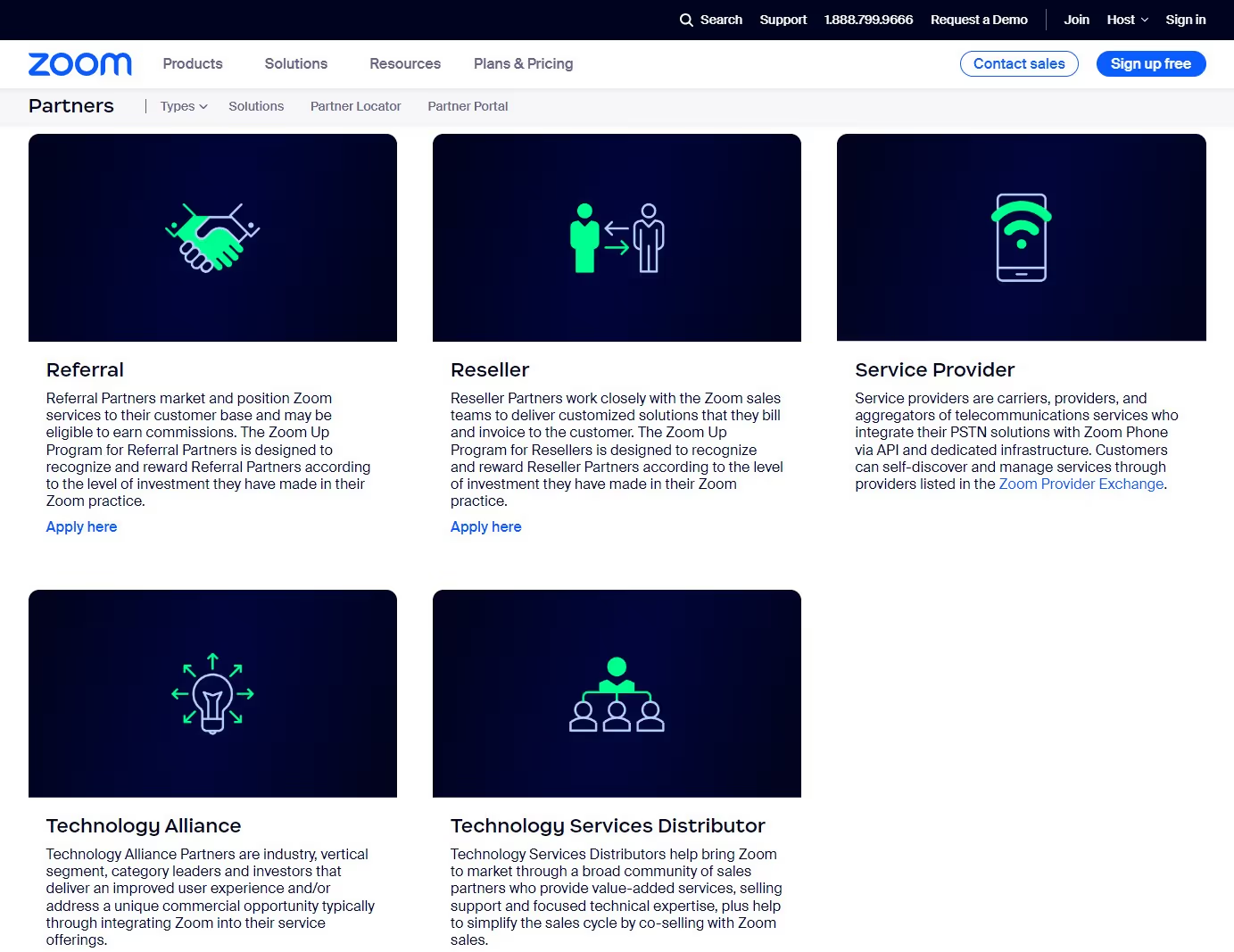
The common ground among these giant brands is that they created inherently shareable experiences, offered real-value features and incentives, and made the sharing process online as easy as talking about it in person.